
Bangia fuscopurpurea
Black Sea-hair, Velvet Thread Weed
6 January 2024
French Beach, Juan de Fuca Strait, B.C., Canada
Tide: 3.6 foot (at time of interactions), receding towards 3.1 foot low at 16:46 PST (measured at Sheringham Point Tidal Station)
Weather: Mainly clear, wind South 10 to 15 km/hour, moderate SW swell, sea rippled, humidity 75%, 8˚C.
Moon: Waning Crescent (23.9%, 25 days); Next Phase, New Moon, 11 January 2024 at 3:57 am PST; Previous Phase, Third Quarter, 3 January 2024 at 7:30pm PST.
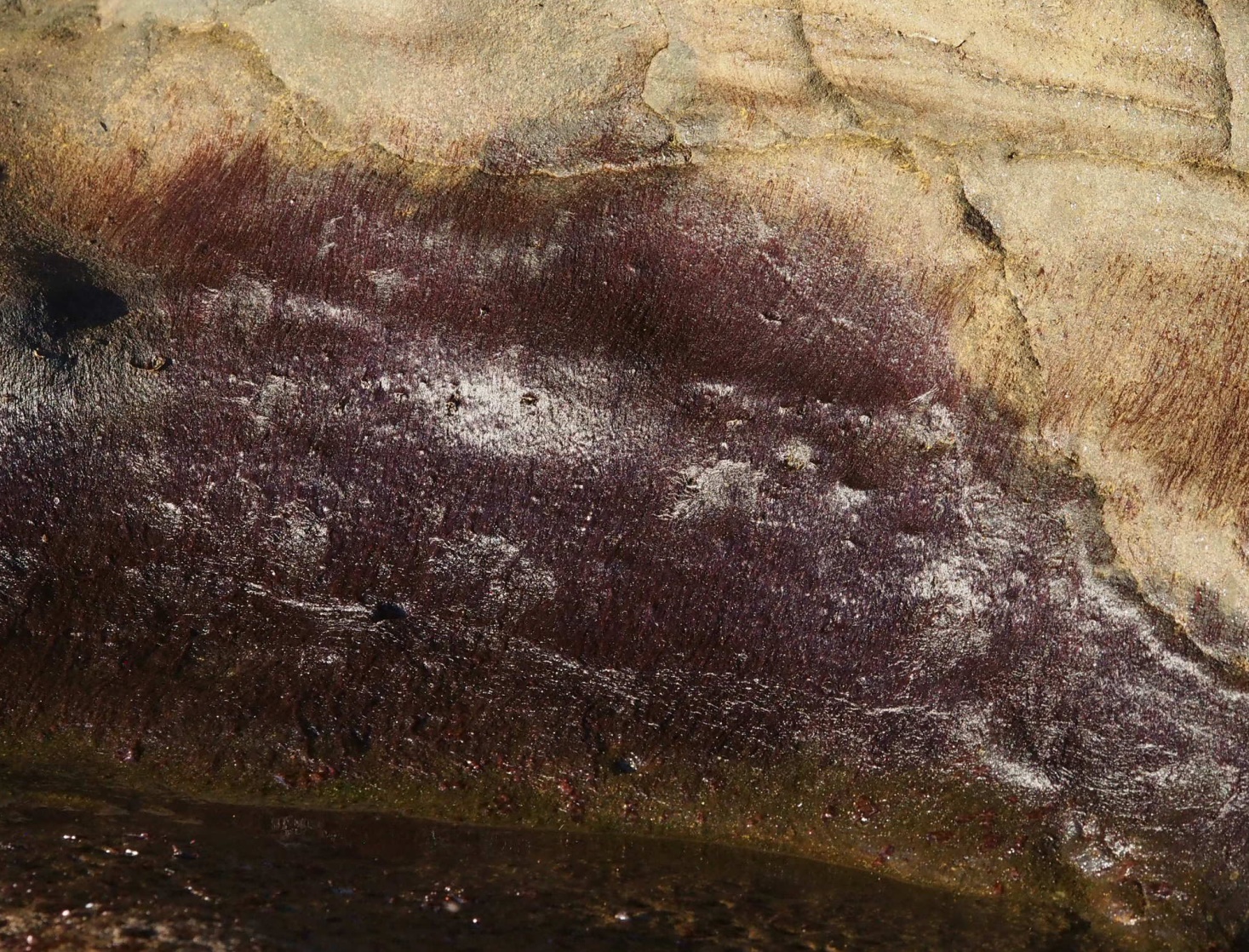
Figure 1: The sandstone cliff here is abundantly populated by Bangia fuscopurpurea, and closer to the rock pool at the its base there are some Pyropia spp. blades. The individual stands of Black Sea-hair give rise to whole purplish-brown mats or ‘curtains’ in suitable locations such as this one. French Beach, Juan de Fuca Strait, B.C., Canada. December 23, 2023. Photo ID 27618 ©Seaweedwhisperings.com
Person 1:
Growing in very high intertidal, likely only gets sea water from crashing surf. I think it’s above the high tide mark in calm sea conditions.
I’m attracted by its dark purplish brown coloration, often showing red tones in sunlight.
It grows in thin hairs pulled downwards from its attachment by gravity and seeping water.
Grows in dense “colonies”.
Nearby grows a green seaweed, likely Ulothrix flacca; it also has a similar structure.
I’m wondering what differentiates which species grows where – possibly Ulothrix likes a bit more of fresh water flow from above.
Person 2 decided almost immediately to move away from me to another Bangia spot. Does Bangia not want to associate with others? Or maybe not with others of different cultures?
Seems to be quite content living with others of its own kind.
Beautiful from the distance / beautiful up close...
Confident, nothing to hide.
Not boastful or pushy.
I magnified the strands; each is made of gorgeous tiny beads, all looking the same.
Dries a little grayer. Can tolerate desiccation and is patient to wait for its next rain or ocean bath.
Seems very comfortable in its environment where very little else can survive.
Not really willing to try anything new – this home and way of living is great!
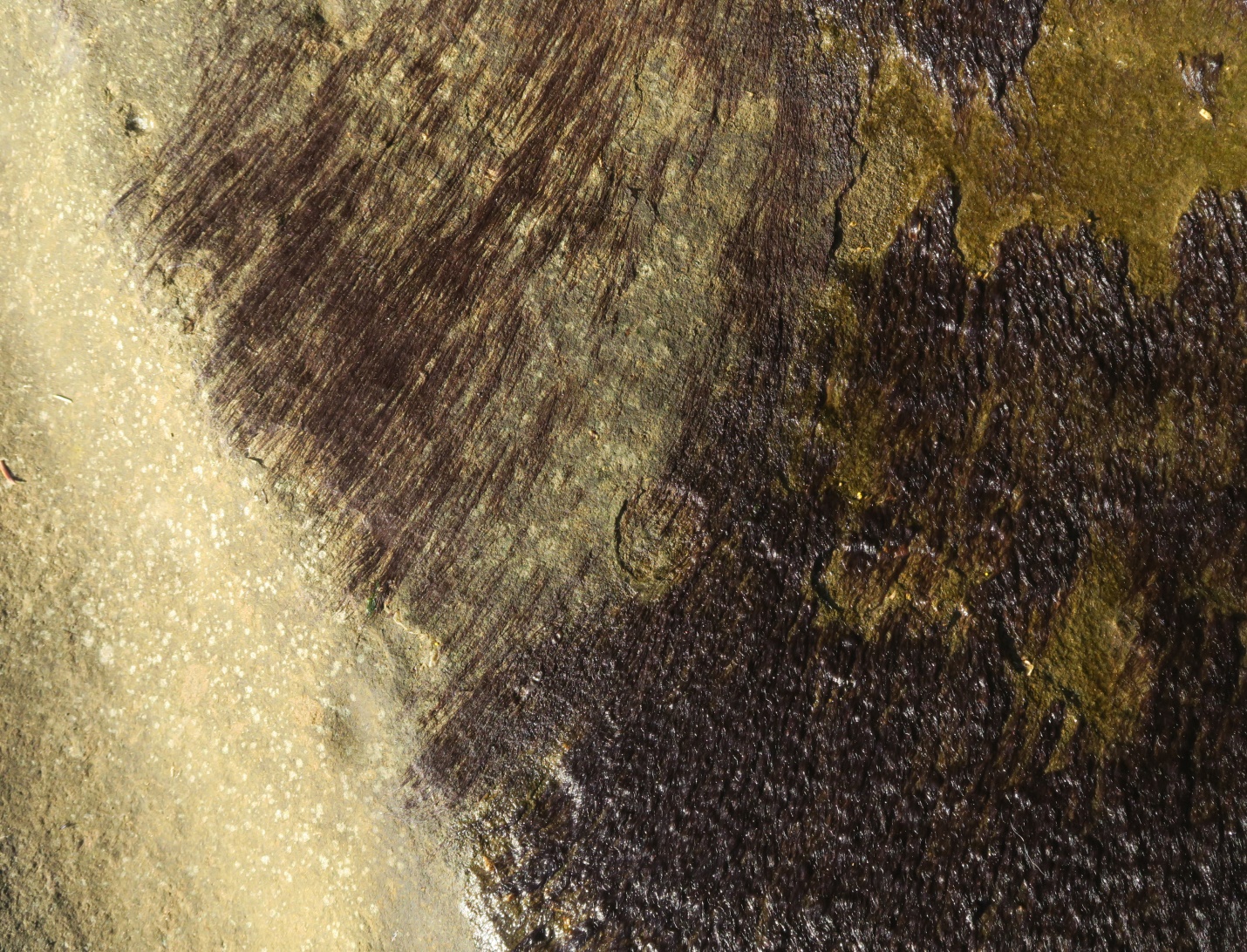
Figure 2: This photo shows the distinct differences between wet and dry conditions for Black Sea-hair – one side is individual threads, the other a gelatinous velvety mass. French Beach, Juan de Fuca Strait, B.C., Canada. January 6, 2024. Photo ID 27619 ©Seaweedwhisperings.com
Person 2:
The sandstone rises here as a bank somewhat distant from the average high tide line and the edge of the shelf that drops below it. This rise of stone is adorned with a growth of the finest deep purplish-brown red hairs. They grow in multitudes, many hairs all together, and mark the stone with their form and color and light reflecting traits.
In the sunlight they have a sheen like satin; this is in the places where the hairs have been out of water the longest and are at various stages of drying out. Where they are still wet these same fine hairs take on more volume and texture, and they also take on the “look of” more volume. A little bit of water probably magnifies these tiny filaments to the human eye, but the filaments themselves drink up the moisture too, and thereby do enlarge as they swell with hydration.
When wet, the groupings of Black Sea-hair look less like “individual” hairs; in fact they blur into a more total crinkled velvet coating.
The color has depth too, it is very dark. For a seaweed this fine in size, it’s diameter of thread can’t be even .01 centimeter, it must take a true and deep pigment to produce such color.
When wet, the feel of the groupings of this seaweed is very soft, certainly slippery and even somewhat gelatinous. If this was on a horizontal surface treading over it would surely be almost impossible; it feels like the seaweed would act like a layer of ‘grease’ on top of wet stone.
Much of the area where Bangia is growing here is more vertical, though, and it is constantly draining. Last night there was heavy rainfall and it looks to me that Bangia fuscopurpurea tells the story and clearly marks the passage of the most recent water movement it has experienced. The lines traced are quite graceful, even beautiful. And when the water stills, Bangia is stilled too – frozen in place as living evidence of that latest flow. And Bangia can only be freed to move again with the return of some water – spray from the sea, rain from the heavens or a seep of fresh water trickling down from the forest adjacent to this shoreline.
In some areas, particularly the higher or more vertical locations, Bangia is plastered to the rock as if glued in place; indeed the mucilage of the seaweed, that gelatinous quality that was noted, probably helps it attach when drying. It therefore becomes “one with the rock” and less vulnerable perhaps to the kind of damage that could occur were it standing out as single tiny strands of dried algae.
From a distance one could think that the dark purplish red was “painted” onto the rock, or a stain left by the passage of some deep red liquid.
Most strands that I carefully measured were about 3 cm long, and some were only 1 cm.
I tried “lifting” a few hairs from an area where the Black Sea-hairs were growing together quite thickly and were also drying out somewhat. My fingers were far too huge for this delicate operation, and several hairs all came up together. Once disturbed like that they do not retain their orderly arrangement and the hairs all had bends and curves to them that all together looked rather like quite a tangle. The hairs also easily pulled away from their holdfasts when I lifted and then tugged very gently. It looks like the tangle would be difficult to ‘comb’ through, and also that if one tried this it would not be possible to restore the neat, nearly parallel arrangement of the filaments. No, it feels very clear that this can only happen with the addition of water; Bangia stretches out in its fullest reach when it is immersed, and especially so when immersed in the gentle flow of water over its somewhat vertical rock perches.
En masse and in the golden afternoon light, this seaweed is striking.
And one could be forgiven for not thinking of it as a seaweed, for it grows rather far away from the regular reach of the sea compared to most other seaweeds. Perhaps here these walls of sandstone receive a dousing with ocean spray fairly regularly, especially in winter with high tides and wave action from frequent wind and storms. It looks unlikely to me that these Bangia-chosen locations are regularly submerged by the tides. So sea spray with winter high tides and wind seems to be quite enough for you, Bangia – enough even for you to flourish.
You are a winter – spring annual in our area. When warmer and longer days approach, you dry up and disappear, leaving no visible mark. So for you, timing is important; you have your season and a quite different season it is. The gift of this timing is that you can thrive here without too much competition.
So, Bangia, you work with the shorter days, the lower light, the rougher seas and spray carried to you by winter winds and you make this all work for you. You even make quite a “show” in your season. Alongside a few opportunist greens, you are the main presence in this niche.
Bangia it seems you even make use of freshwater seeps as they flow down to the sea and this you share with some of the green algae nearby. It also seems that you can grow on sections of the rock that have little of this seepage, so maybe you are simply tolerant of fresh water?
One thing is certain, you are a group-lover, Bangia – you do not “do life” as solo individuals but flourish in the company of others of your kind. Together you help keep each other hydrated; I’m sure that’s one practical result of this lifestyle. But I wonder too, about the ‘community’ of you all. I think you flourish together in the joy of moving as closely as you can to match the action of water around you. I listened carefully and could sense you giggling and laughing in delight as if this partnering with water is the ultimate of pleasures to you. Of course, you don’t always have these circumstances, and so you can be patient, too, waiting for the next chance for you to be reaching and moving with any water that flows to you.
Together in groupings you are so much more striking, even stunning, than you would be alone. One single hair of Bangia would hardly even be seen.
And looking at one single strand of Bangia with a hand lens reveals that each “hair” is a strand of cells all joined up in one long thread, like beads on a string. And if you blur your focus, or indeed look with suitable magnification, you can see that light reflects off each cell, showing how each Bangia hair is comprised of beads of light! Another surprise and delight that comes when Bangia is paired with water.
When you are more aged, it seems that your strands fade from deep purplish-brown red to an olive green. I could find areas where your growth was thicker together and some of this discoloration was happening. Also in some areas, where other species of green algae mingle with you, your overall look is more dingy, a brownish tint that reminds one of decay, rather than the rich purplish brown of your prime and solo species looks. At this season though, early in January in the Pacific Northwest, it is still mid-winter and I think you are delighting in this prime “time”, Bangia. Your season is not yet waning.
Bangia your success is not found in traits such as size and might; indeed, individually you are quite tiny and weak. Your way of being includes community living and cleverly working with smaller gifts of light and sea water. You are so good at this that you can even create quite a regal “show” – it is like a pinnacle of expression of “working with small”. Like an algal alchemist, you take the tiny portions allotted you and transform them into a life that includes joy and delight.
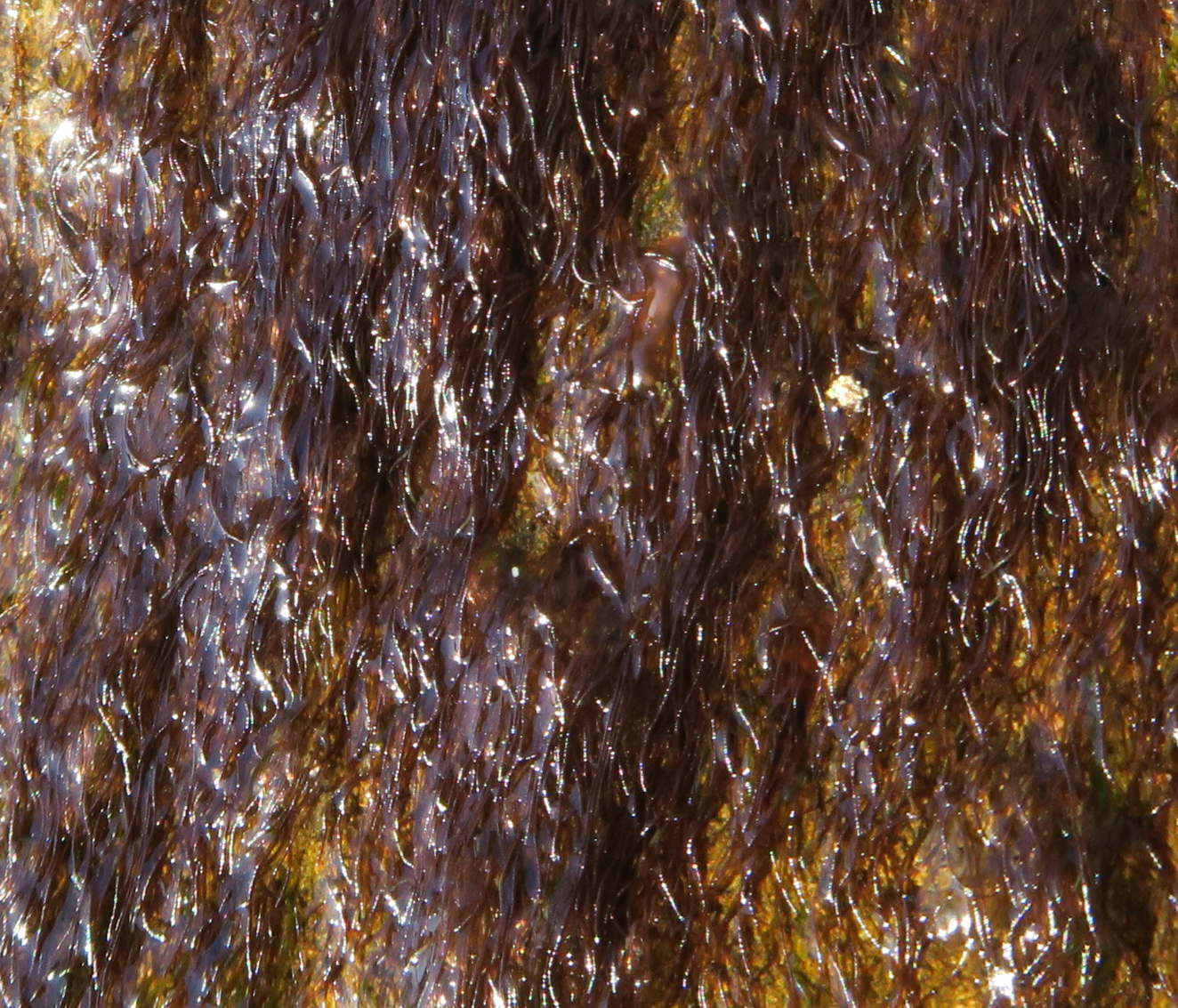
Figure 3: Enlarged larger than life-size and also somewhat pixelated, this image reveals the “beads of light” that comprise the Bangia ‘hairs’. Gently moistened by a seep and bathing in the late afternoon winter sunlight – this is the best of good things for this seaweed. French Beach, Juan de Fuca Strait, B.C., Canada. January 6, 2024. Photo ID 27620 ©Seaweedwhisperings.com
Discussion:
This seaweed loves to group up with its peers, and also has no need for others (others different from their own kind) to be like them or agree with them. There’s no need for outside endorsement and also no desire to convince or convert others to their way of being. What they have, is to them, great. And that, quite simply, is that. This is distinctive and differentiates Bangia fuscopurpurea from other nearly similar energies.
It has confidence, a gentle yet complete confidence that arises free from any qualifications. Bangia exudes the energy of easy confidence and it is enjoyable to be in the presence of this energy.
This was a bit of a surprise, the confidence found in one so “small” as was the natural ease of it. This meshed with the “giggling and laughter” that was perceived. The laughter we heard comes not from a childish place, but from a place of awareness that there simply is no better pleasure for them. They find bliss – perfect happiness, in their place and in the moment, and they find bliss, like their confidence, with ease. This leaves them free from need; they are not striving for something more.
Bangia does enjoy its pleasure and it seems also that theirs is not a reckless fun; it is ‘fun’ that is all an easy part of their innate capacities. The pleasure and delight, indeed the fun experienced in life, is a notable element of this seaweed’s energy, and it possibly exists in clear contrast to times when this seaweed is dried, fixed, motionless and literally ‘suspended between’ times of physical movement – movement that is only possible with its wonderful watery partner.
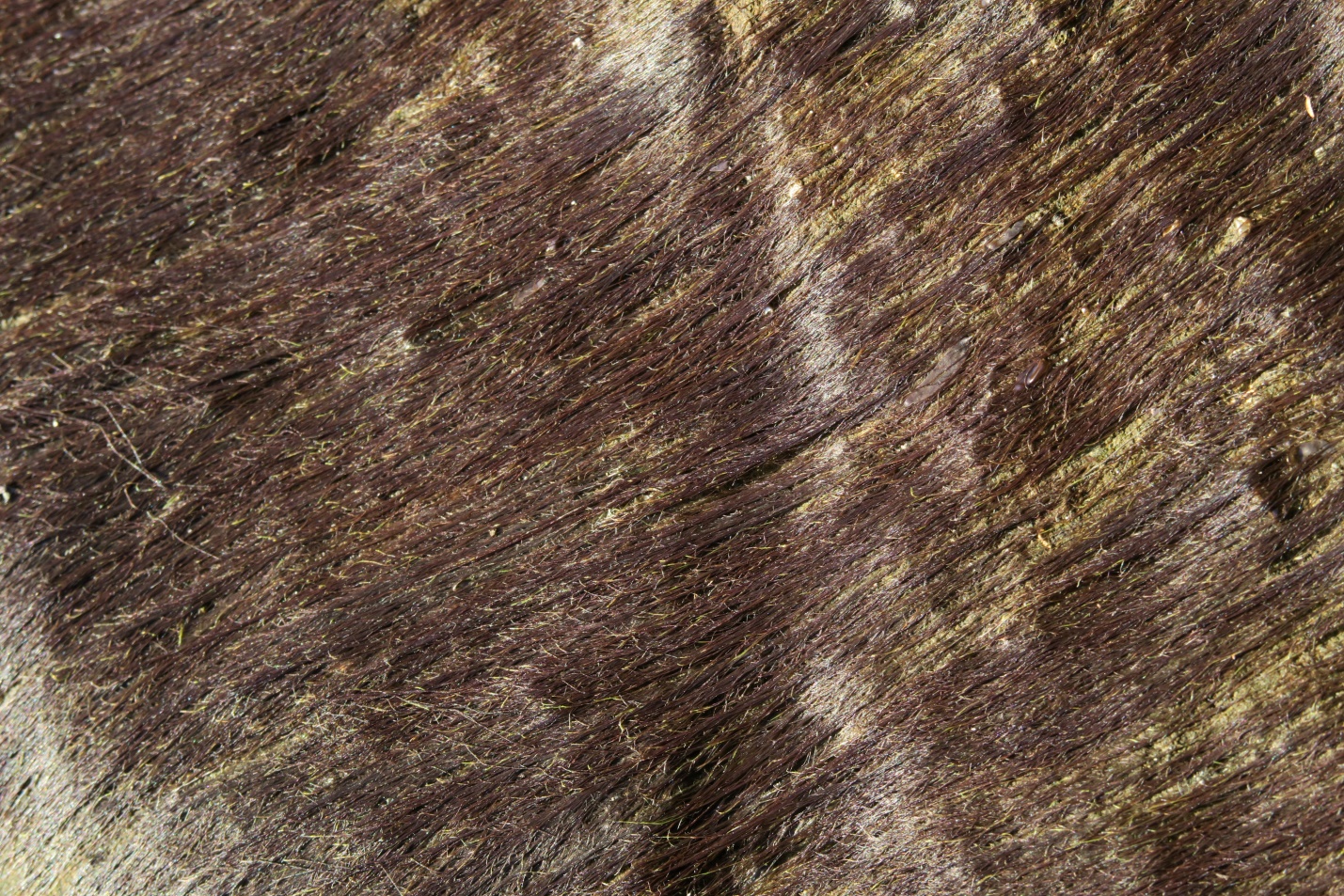
Figure 4: Viewed fairly closely, the moderately dry filaments in this area look very hair-like indeed. Individual tips of filaments are lifted above the overall satiny parallel masses. French Beach, Juan de Fuca Strait, B.C., Canada. January 6, 2024. Photo ID 27621 ©Seaweedwhisperings.com
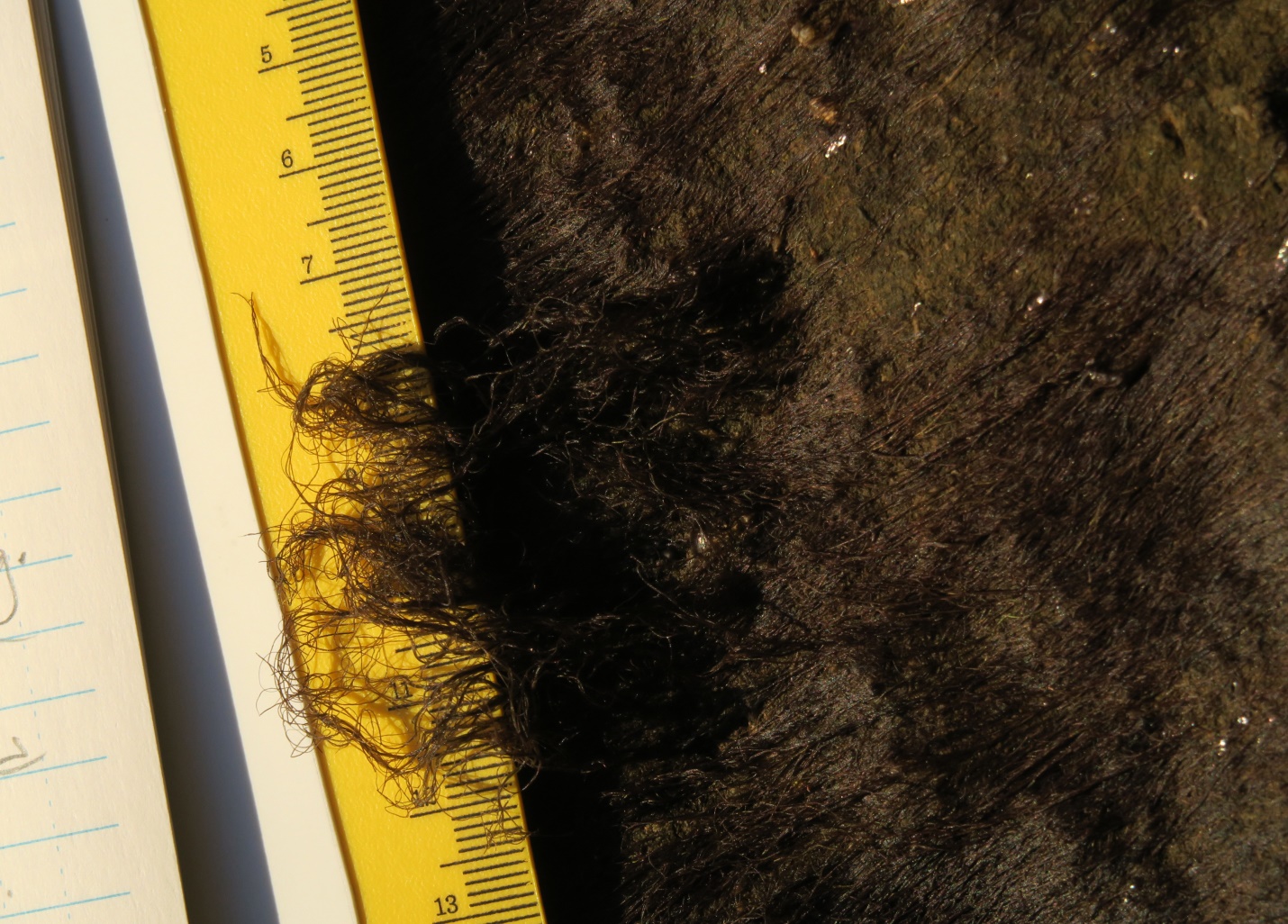
Figure 5: A tussled group of filaments is shown atop (and beside) a field notebook for scale. French Beach, Juan de Fuca Strait, B.C., Canada. January 6, 2024. Photo ID 27622 ©Seaweedwhisperings.com
Biology & Natural History Information:
Description:
When young the gametophytic thallus is a narrow, hair-like filament of dark red cells that is only one cell wide. As it grows cells divide to form several parallel rows of cells in upper parts. Individual filaments taper to a base just one cell wide and these basal cells form rhizoidal extensions that help attach the filament to the substrate in a discoid holdfast. Filaments are circular in cross section and grow to 10 cm (upper maximum 20 cm) long and are only 0.05 mm wide. Each cell has a single central star-shaped rhodoplast. When wet the texture is soft, velvety, and somewhat gelatinous and coloration is purplish or brownish black. When dry, filaments form papery dark skeins that are plastered flat against their rocky habitat, and if bleached they can have a dark olive green color.
The gametophytic phase of this seaweed produces zygotospores; the zygotospore then develops a conchocelis phase which is filamentous and penetrates into calcareous shells of mollusks and barnacle casings. This boring habit protects the filaments from herbivorous limpets and periwinkles, animals that readily eat the gametophytic phase.
Habitat:
Thalli grow aggregated on the upper sides of large smooth boulders, other rock and wharf pilings; rarely epiphytically. It is most readily found as thin dried red streaks on upper shore rock of upper or high intertidal regions. The fleecy mats formed by this seaweed, especially at the high tide level, disappear by early summer. The spares filaments of the conchocelis phase are present in shaded locations at all levels including the subtidal.
Distribution:
Widely distributed including Japan, Korea, Siberia, n. Alaska to Costa Rica, n. Atlantic Ocean, southern oceans.
Remarks:
The morphological simplicity of this genus has made it difficult determine species identities with certainty. The names Bangia fuscopurpurea, Bangia atropurpurea and Bangia vermincuarlis have been used for species in our geographical range, but as yet the correct names are uncertain and some are now considered synonyms for each other. We have chosen the name Bangia fuscopurpurea following the lead of other phycologists and publications that acknowledge that this name describes a complex of several species.
This species was named in honor of N.H. Bang, a Danish botanist.
The type locality is from Wales and is recorded as “on lime-stone rocks in the sea about high water mark in the neighbourhood of Dunraven, Castle.” [Glamorganshire, Wales].
Classification:
Phylum: Rhodophyta
Class: Bangiophyceae
Order: Bangiales
Family: Bangiaceae
Genus: Bangia
Species: Bangia fuscopurpurea (Dillwyn) Lyngbye 1819
Former name(s): Conferva fuscopurpurea Dillwyn

Figure 6: Aggregates of Black Sea-hair are viewed here on the sandstone cliff that is moistened by a freshwater seep. French Beach, Juan de Fuca Strait, B.C., Canada. January 6, 2024. Photo ID 27623 ©Seaweedwhisperings.com
![]()